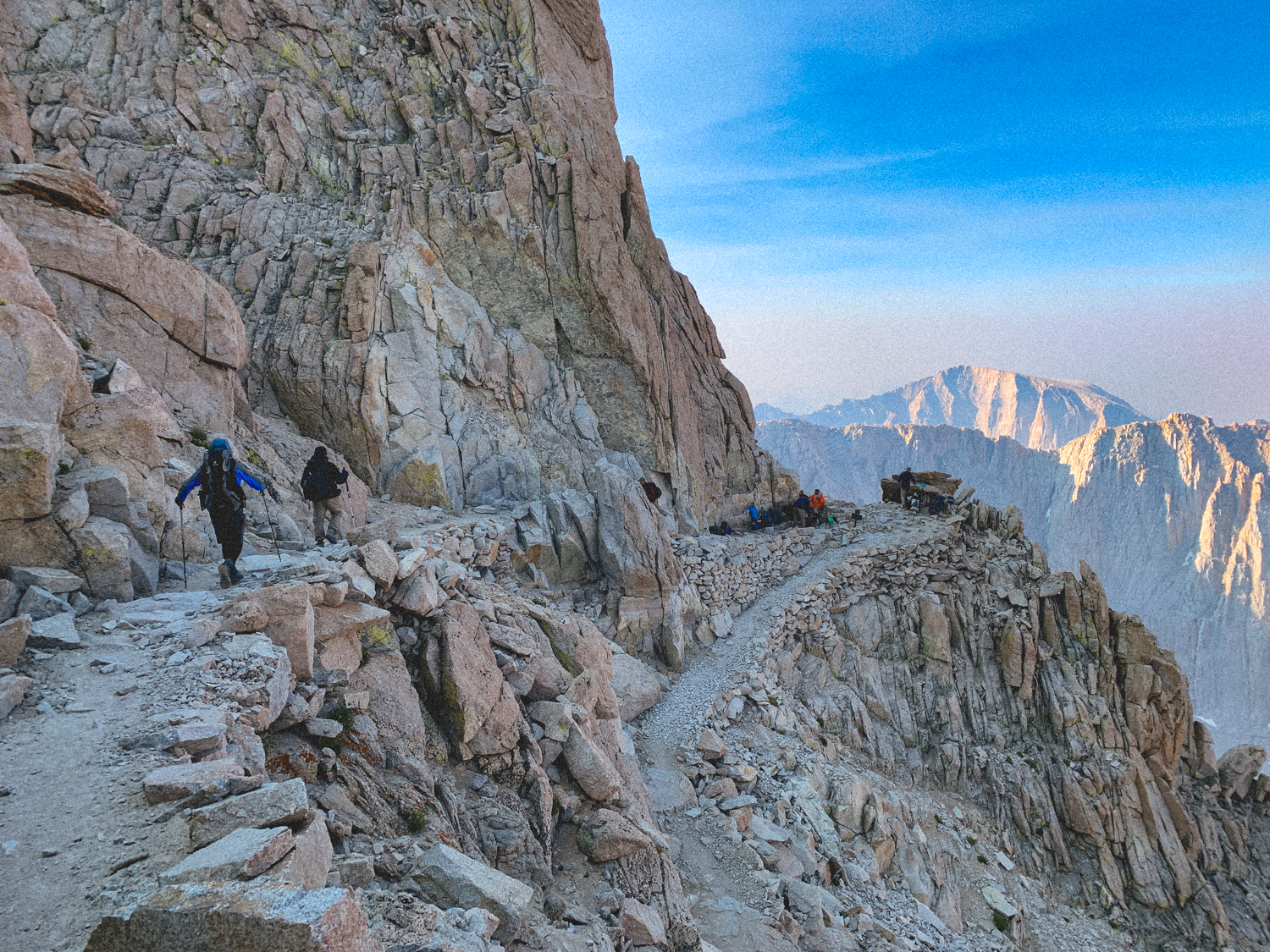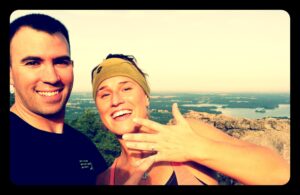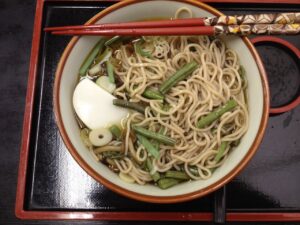In August of 2020, my husband Mike and I packed our backpacks and hit the road to California for a much-anticipated adventure: hiking part of the John Muir Trail in the Sierra Nevada. Our plan was to hike in via Sawmill Pass, meet up with our friend Scott—who had already been hiking since Yosemite—and complete the final stretch of the JMT together.
But like many stories that start with a plan, this one quickly became about adapting.
As we drove west on I-80, wildfires across the Western U.S. turned familiar mountain views into silhouettes behind thick smoke. The landscape felt apocalyptic. By the time we reached Bishop, California, even the rugged granite spires of the Sierras were hidden behind a gray veil.
Still, we pressed on. We stayed the night in the reportedly haunted Winnedumah Hotel in Independence, CA (no ghosts, for the record), and woke to clearer skies—a good omen, we hoped.
Day 1: Sawmill Pass Trail to Sawmill Lake (8.9 miles, 6,000’ gain)
Our hike began late thanks to an outdated map that sent us on a detour to the trailhead. The heat was already climbing as we worked our way through the sandy foothills below the Sierra peaks.
By mile two, I was overheated, dehydrated, and turning alarming shades of red. We were between two unknown water sources and my energy was fading fast.
And then, like a desert mirage, two fellow hikers appeared, descending the trail. They offered to refill our water reservoirs—an act of kindness that likely saved my trip. Grateful and rehydrated, we pushed through the relentless climb and made it to Sawmill Lake, where ash fell like snow around our tent that night.
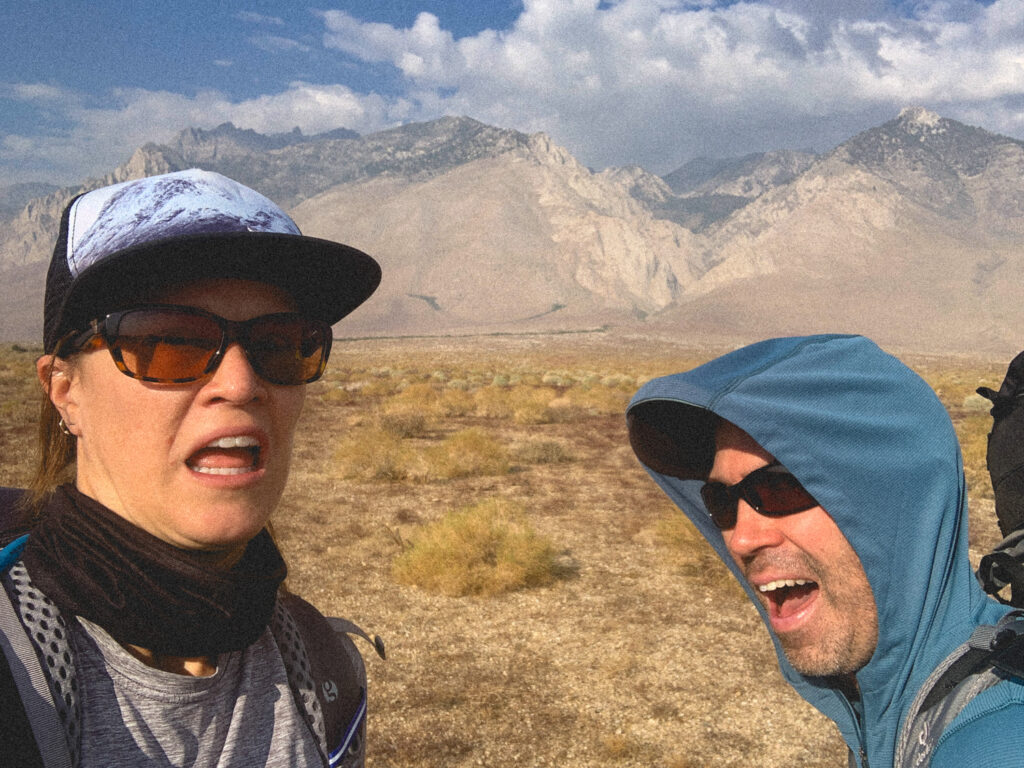
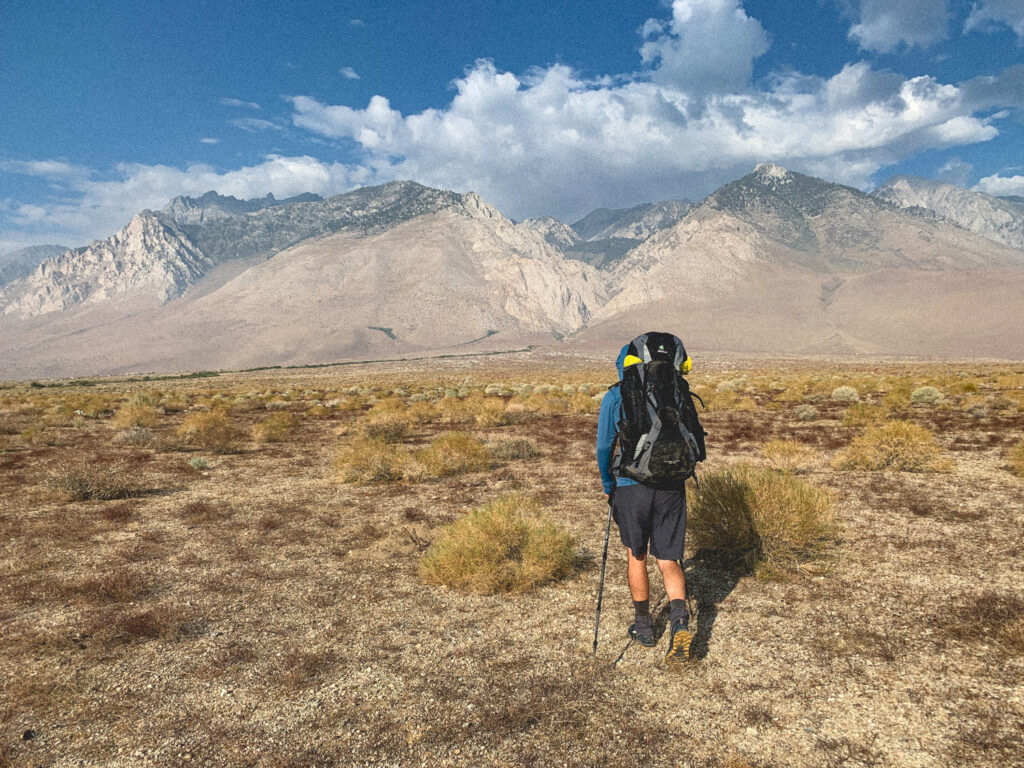
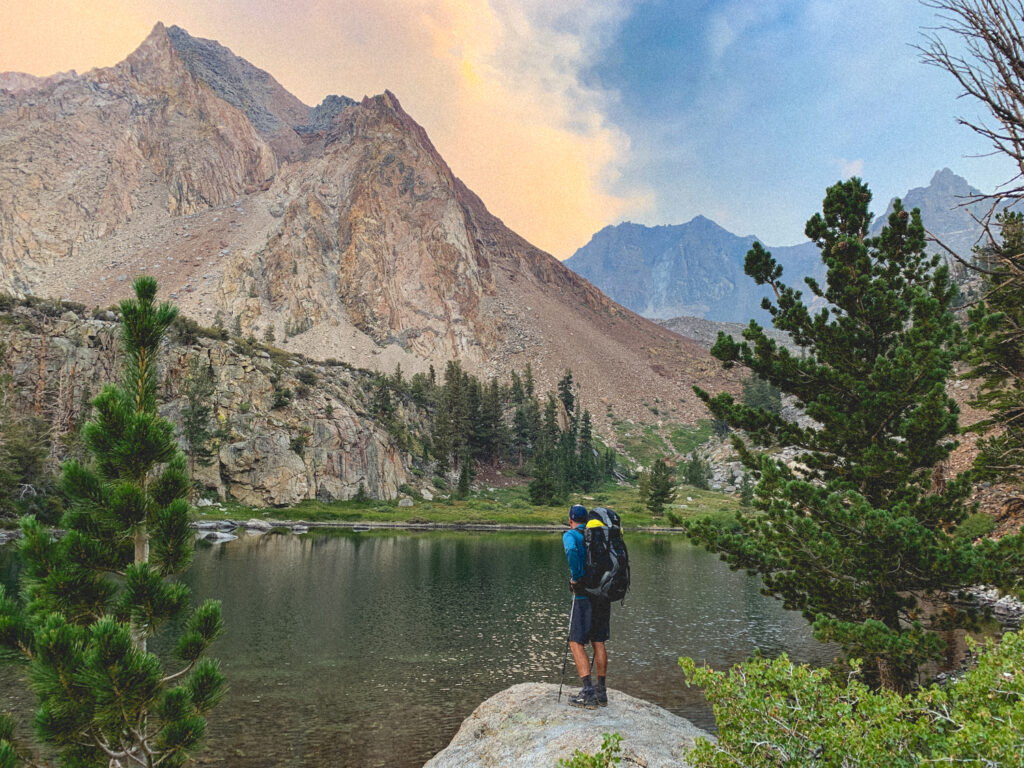
Day 2: Over Sawmill Pass to Dollar Lake (10 miles, 2,520’ gain)
Clear skies returned as we crossed Sawmill Pass (11,355’), and we reunited with Scott just as planned. Mike was happy to offload the 13 pounds of food he’d hauled in for him.
The day’s trail wound through one of the most scenic routes I’ve ever seen—granite walls, alpine creeks, and endless Sierra beauty. We followed South Fork Woods Creek and ended the day at Dollar Lake, surrounded by wilderness and wonder.
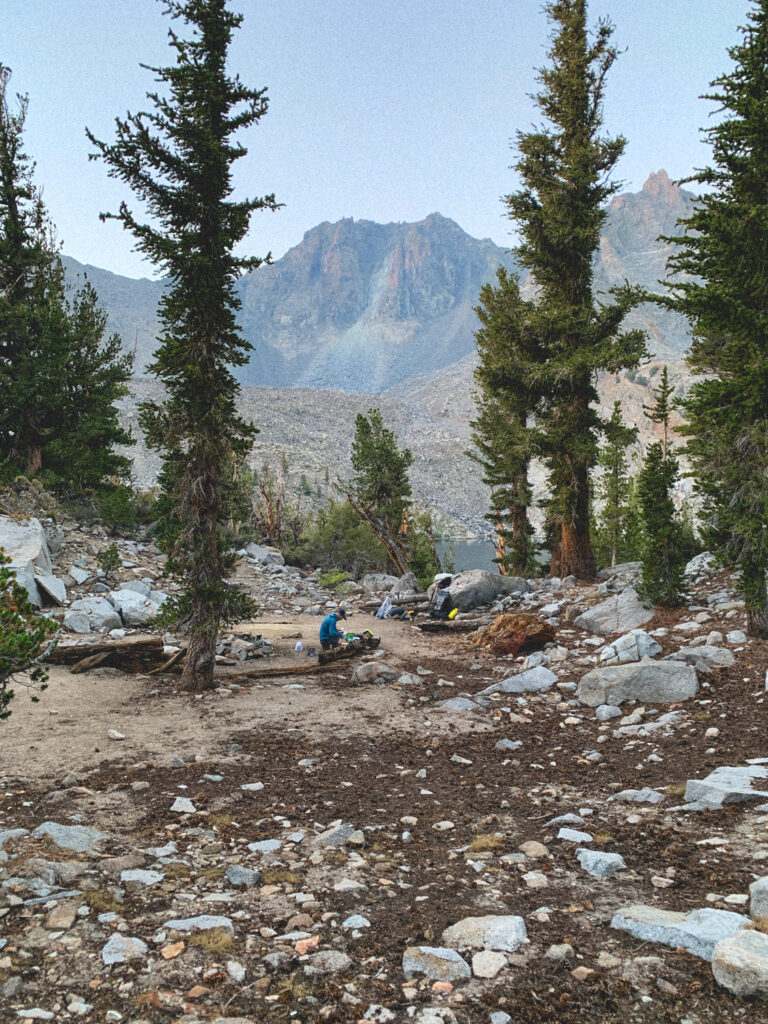
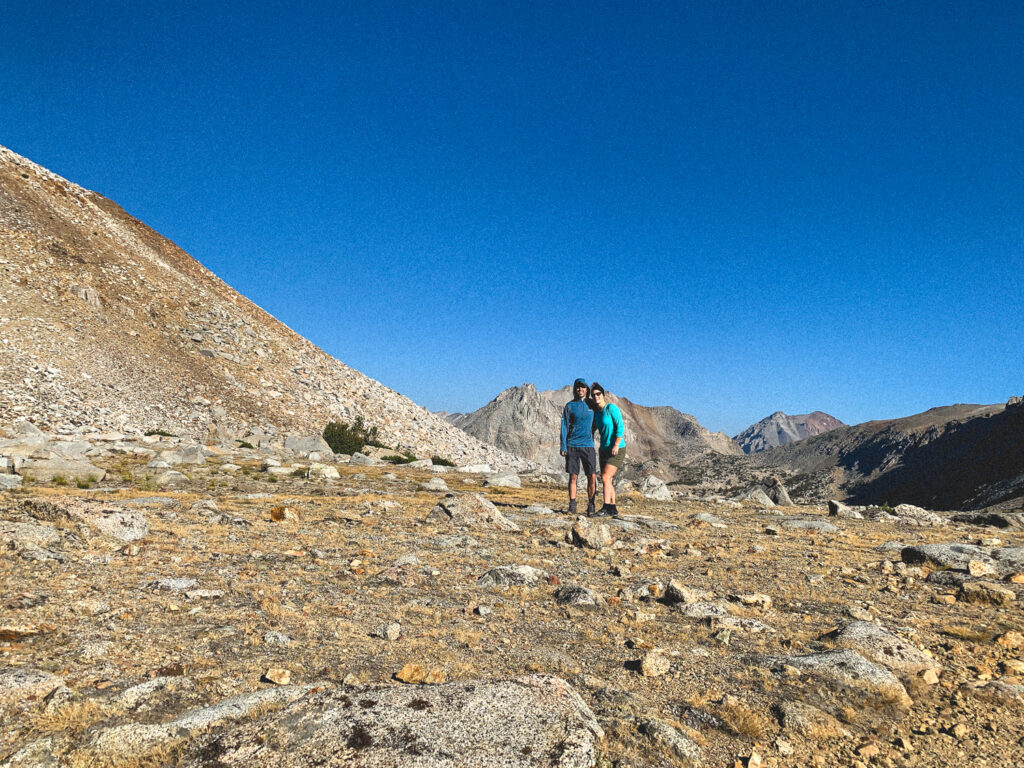
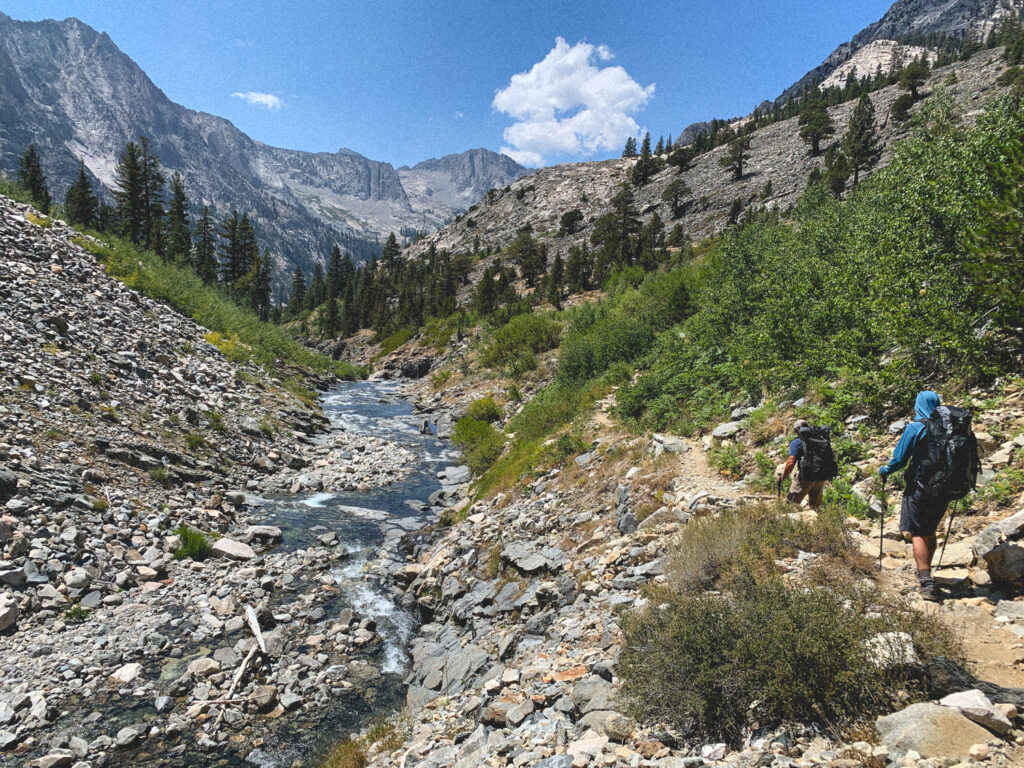
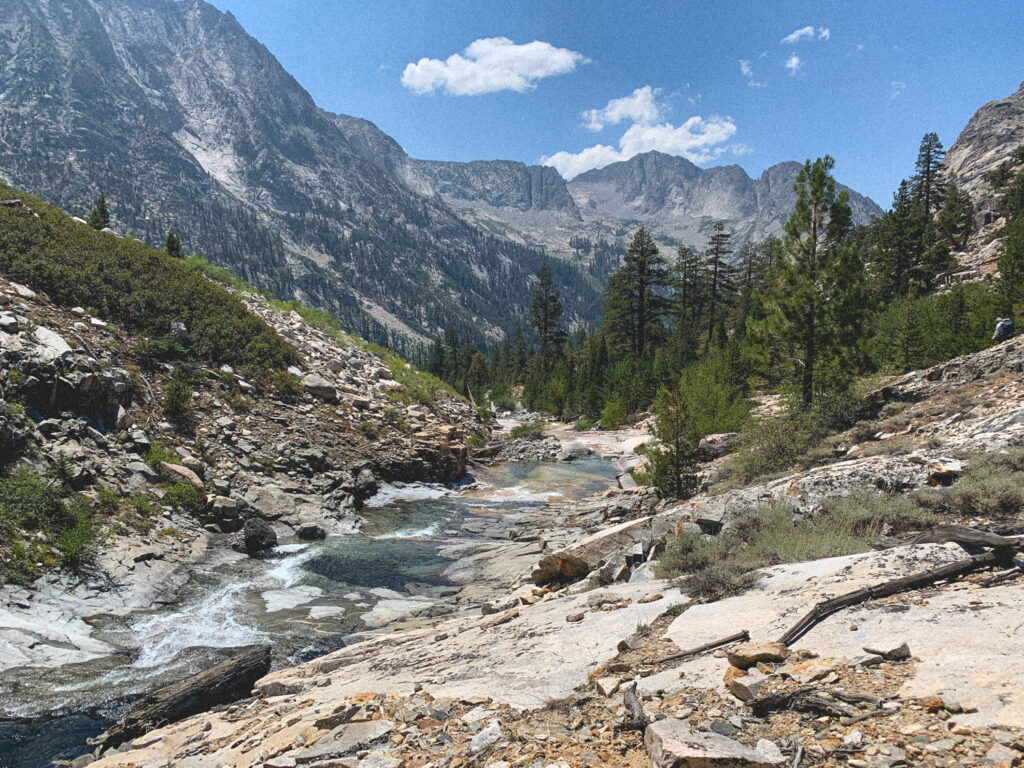
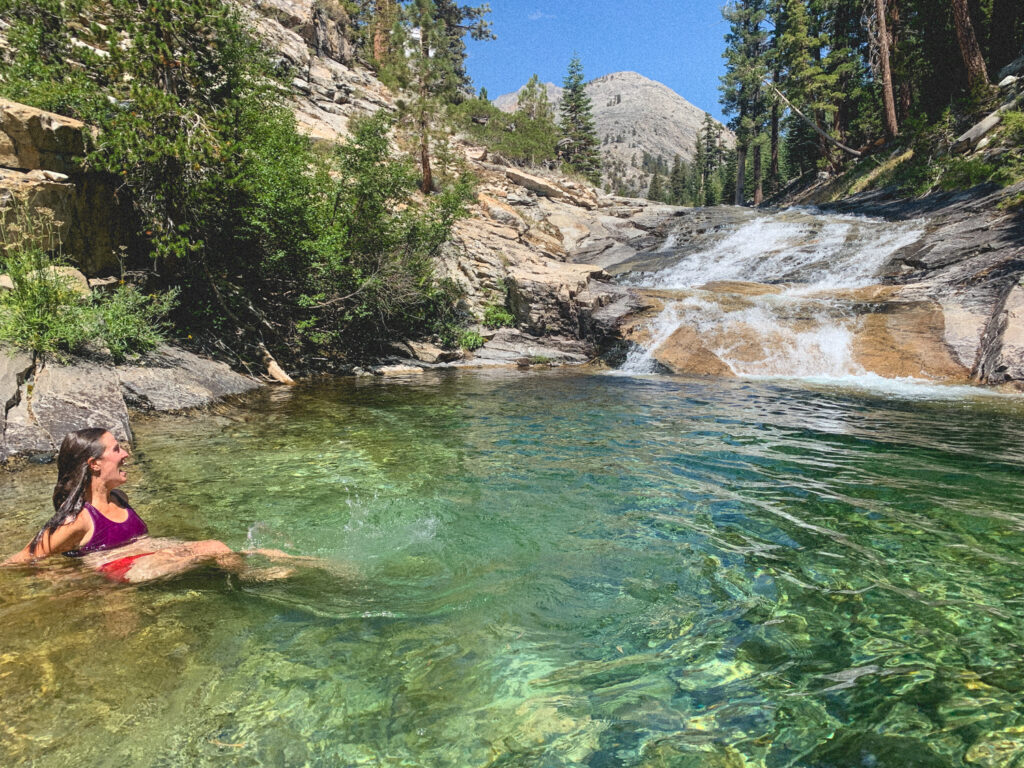
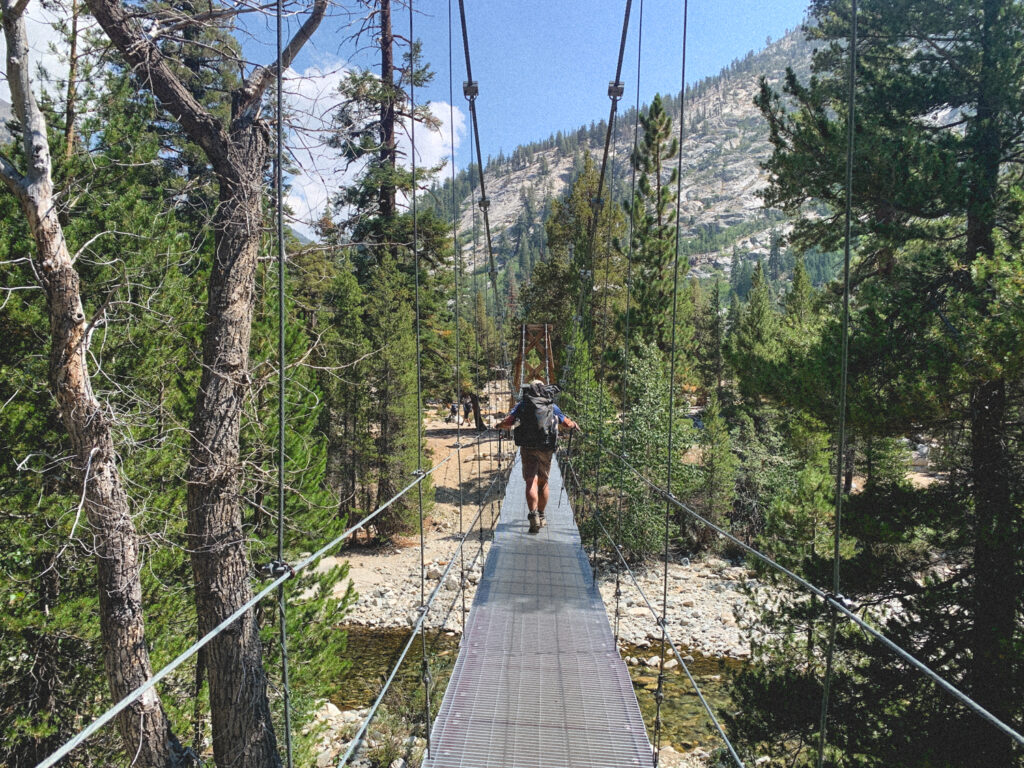
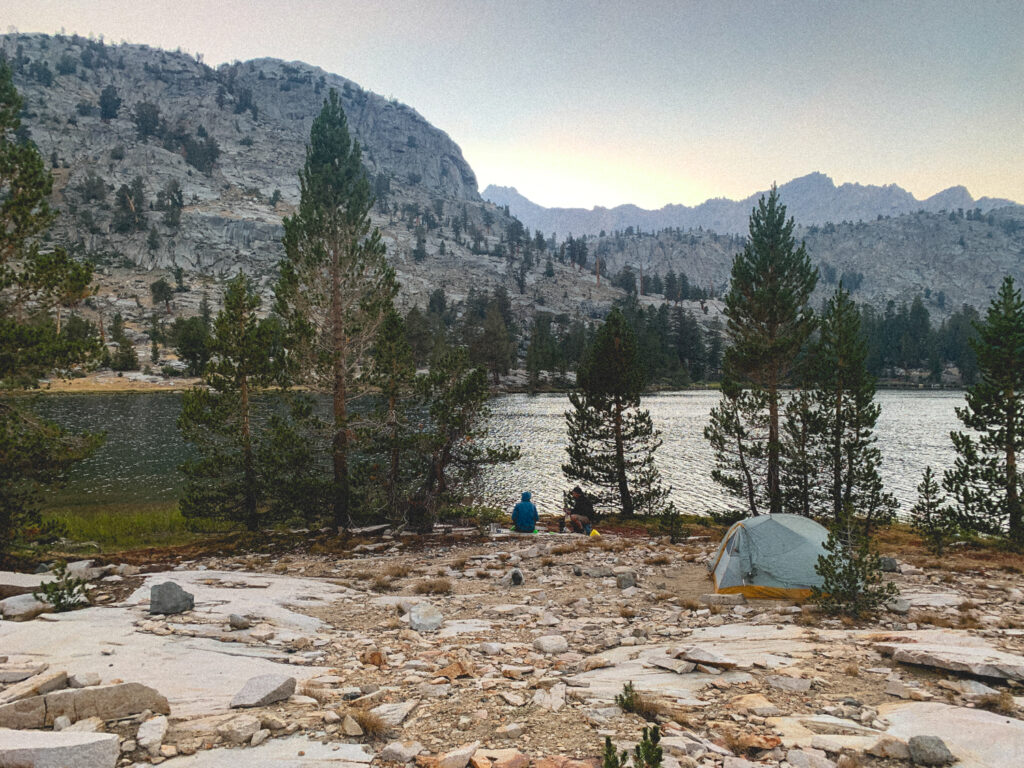
Day 3: Rae Lakes + Dragon Lake Side Trip (2 miles + bonus miles, 610’ gain)
We had a short hike to Rae Lakes, which felt like a rest day. We found the perfect campsite and then took a quick side trip to Dragon Lake, followed by an impromptu visit to the ranger station. The ranger had stories for days, and I left with a newfound appreciation for what those folks put up with.
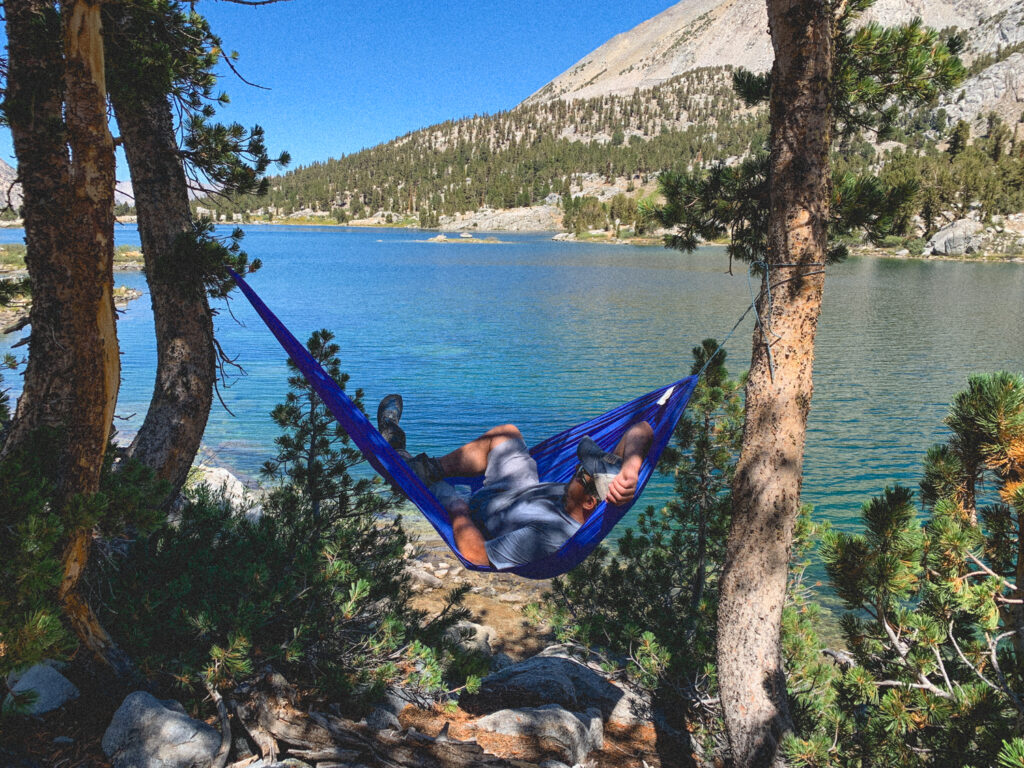
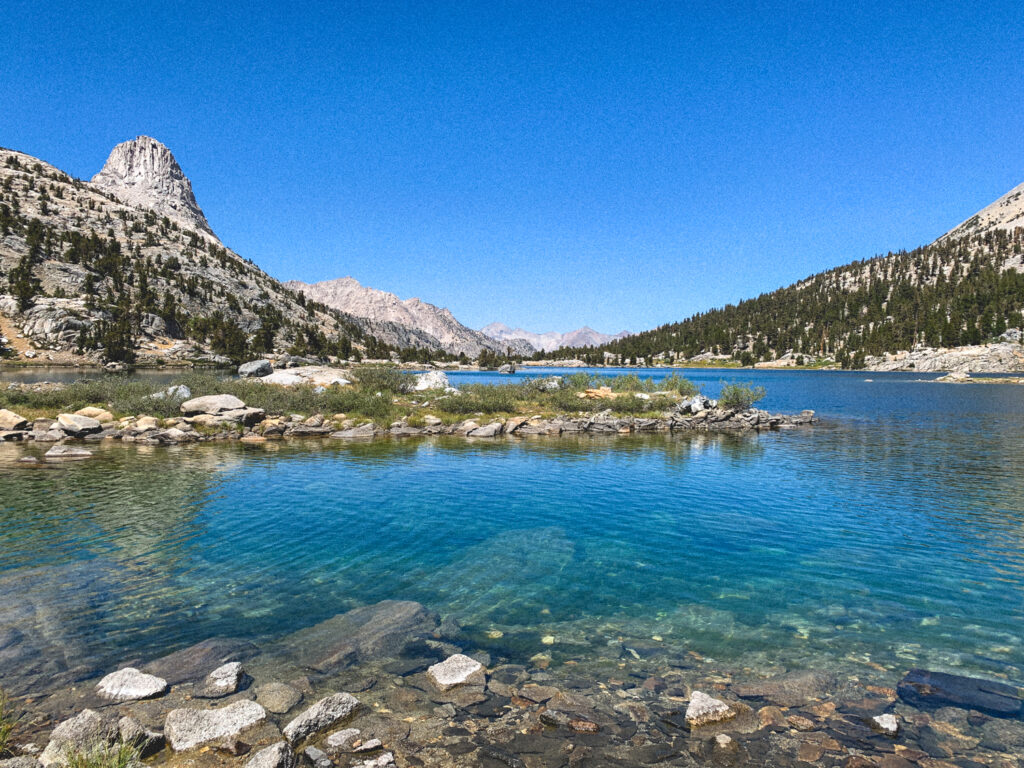
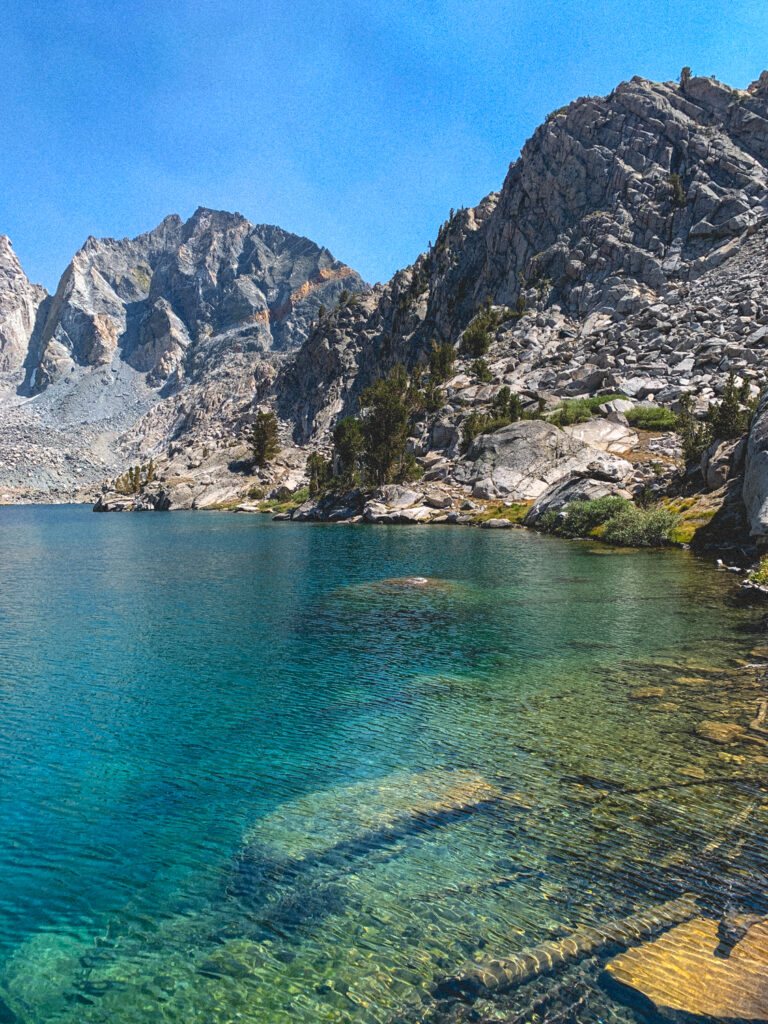
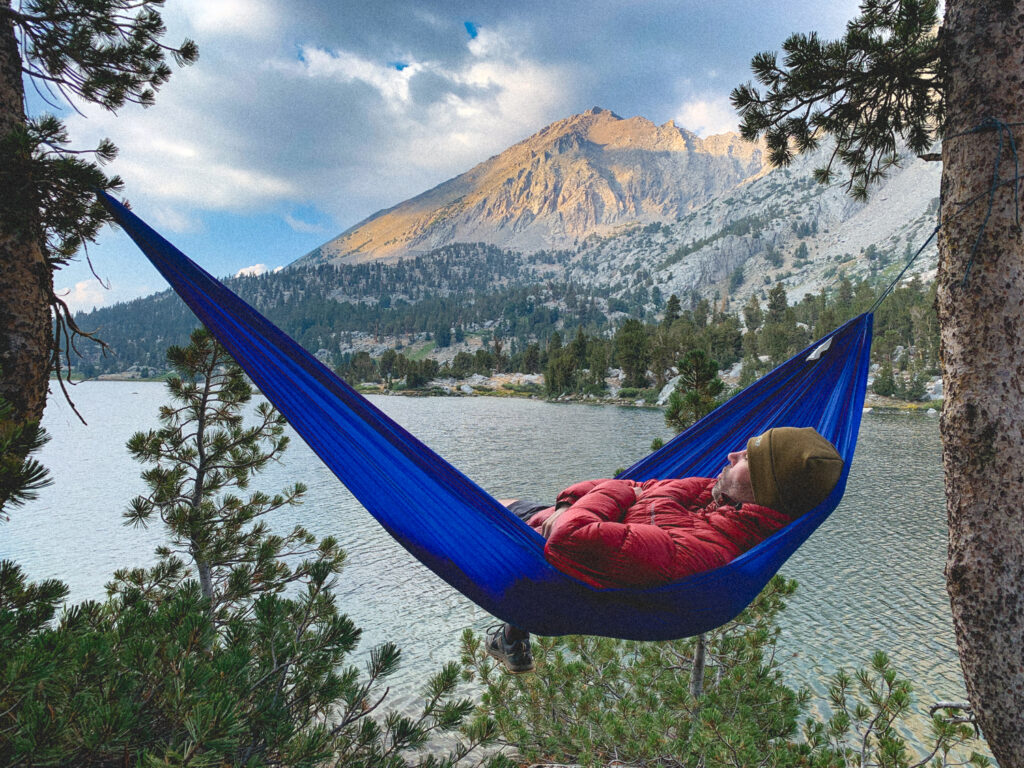
Day 4: Over Glen Pass to Vidette Meadows (9 miles, 2,625’ gain)
On our way to Vidette Meadows, we crossed Glen Pass (11,977’). I loved hiking the JMT north to south—each pass climbed a little higher than the last, building strength and confidence for the days ahead.
We camped in Vidette Meadows, surrounded by the humbling and towering Sierra walls.
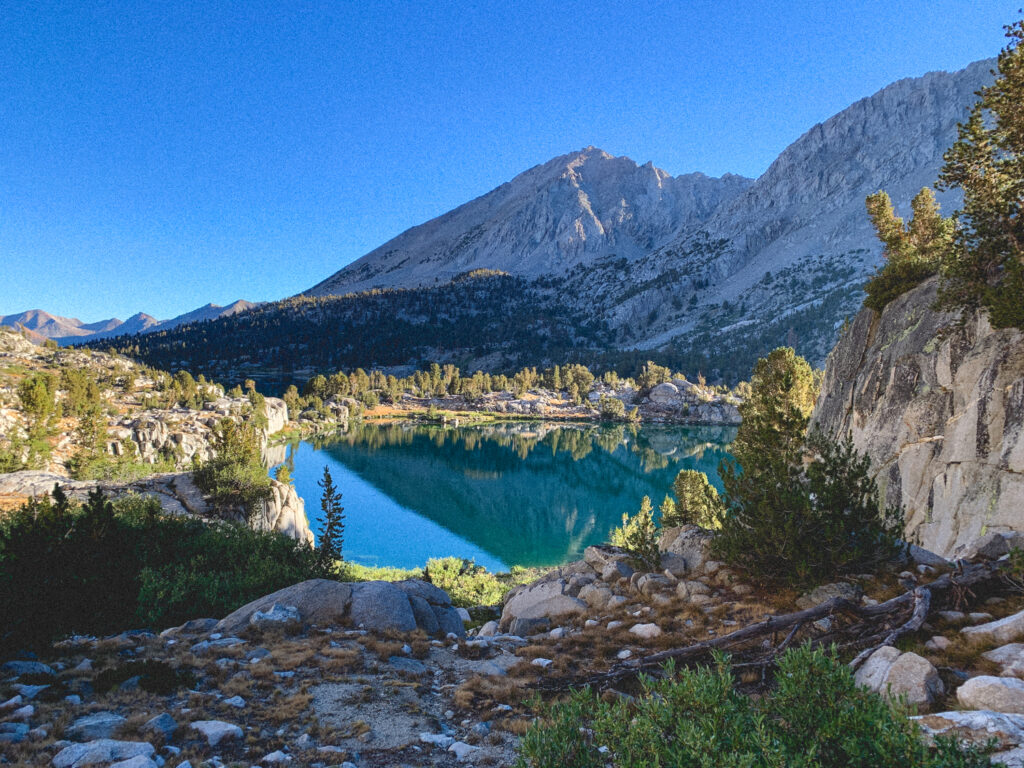

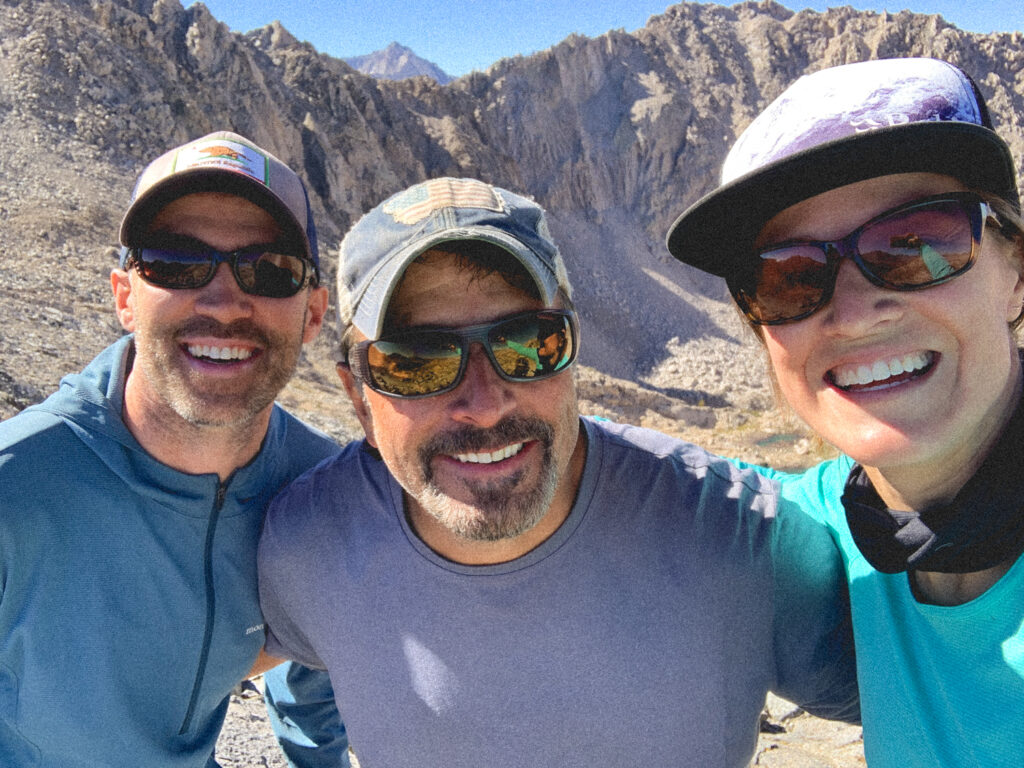
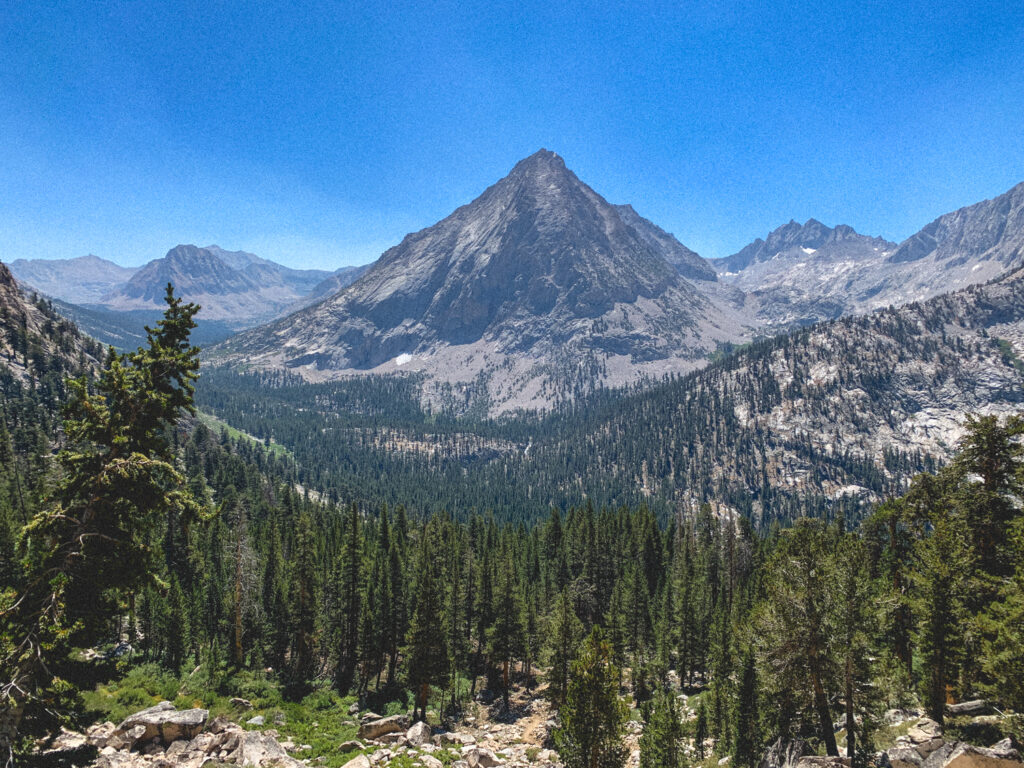
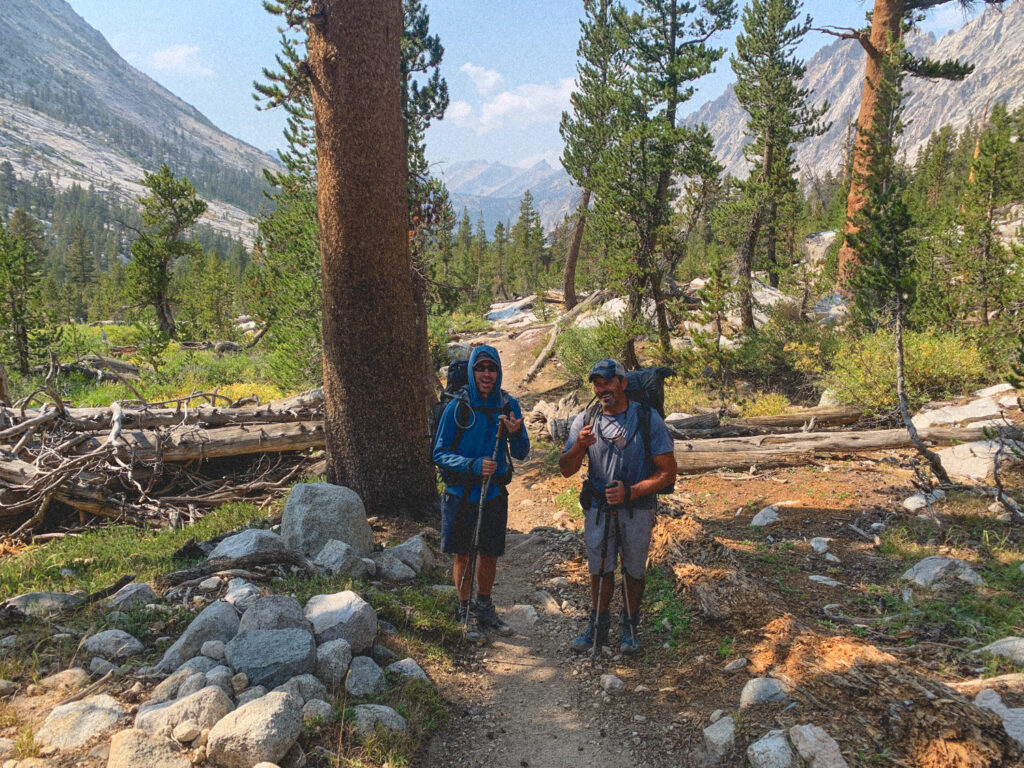
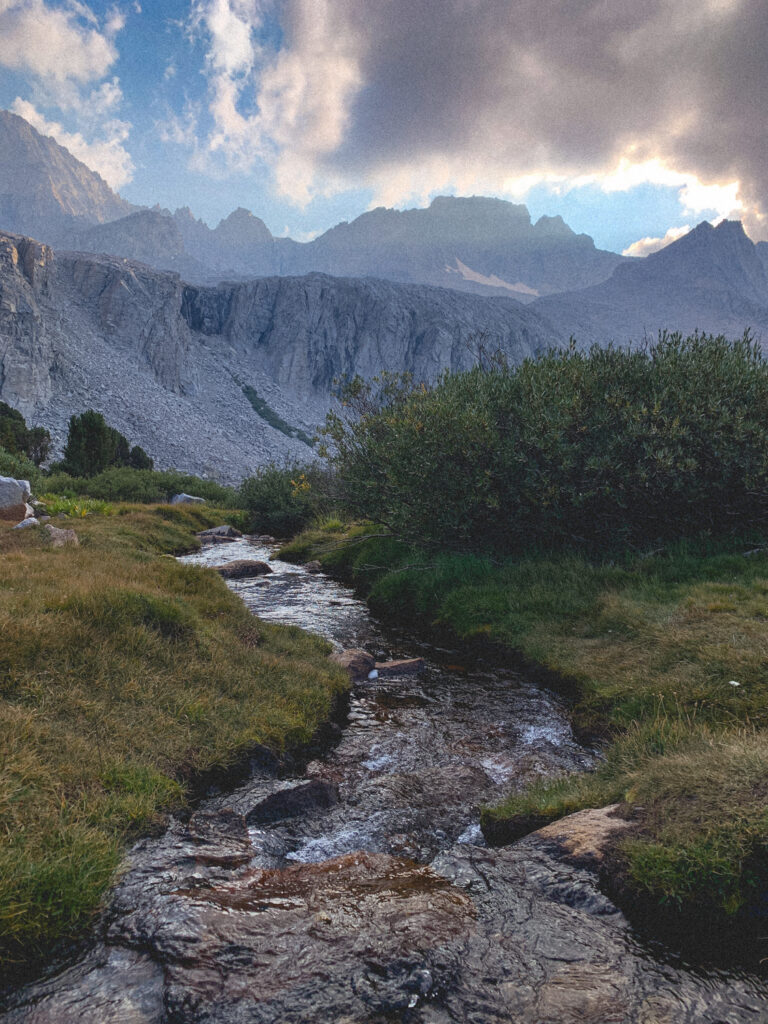
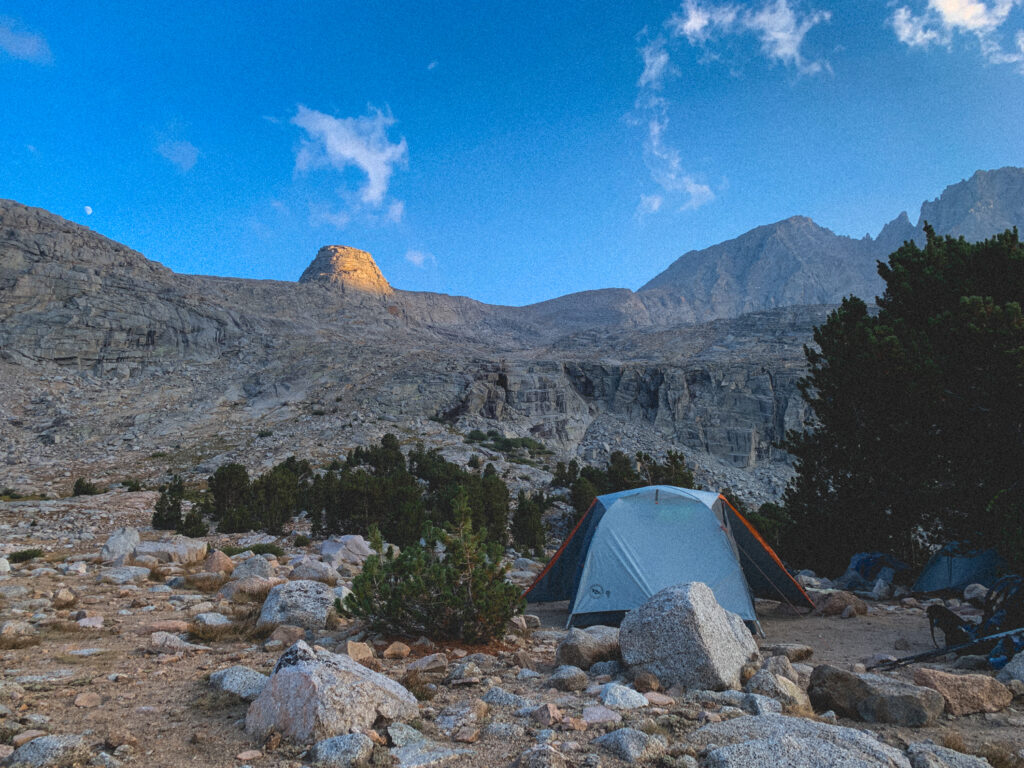
Day 5: Over Forester Pass to Tyndall Creek (9 miles, 2,841’ gain)
Forester Pass (13,200’)—our last major climb before Whitney—was surreal. As we paused on the summit, a group on horseback appeared, navigating the same rocky, exposed trail we were about to scramble down. It was a jaw-dropping moment.
Descending toward Tyndall Creek, we noticed the smoke creeping back in.
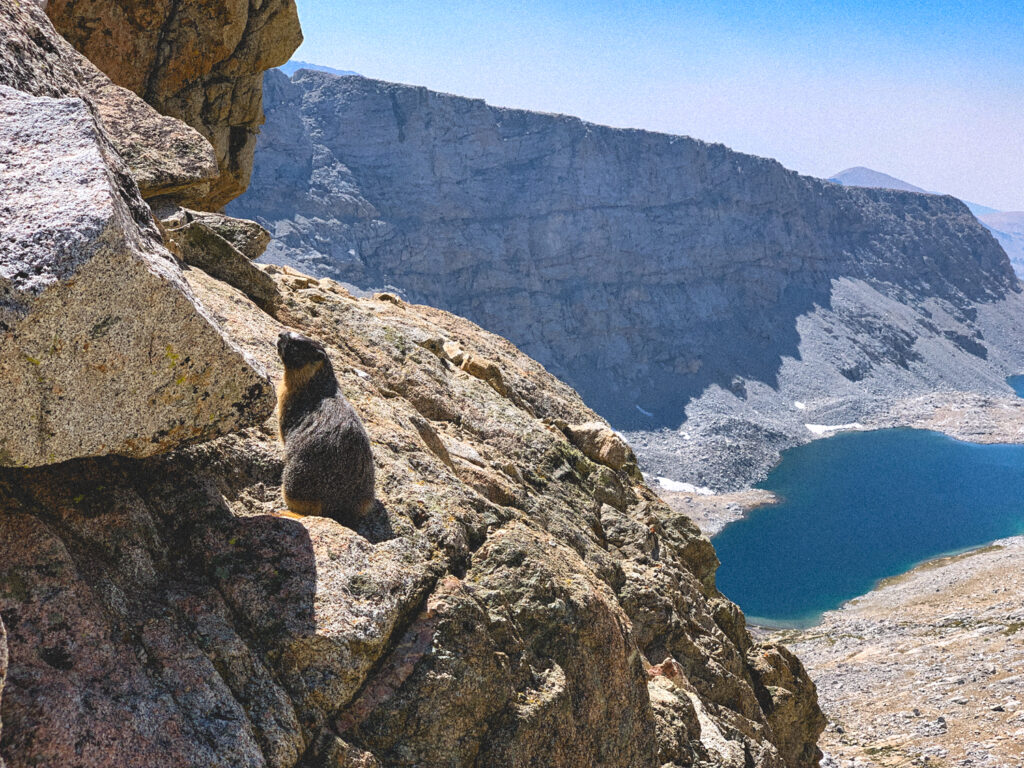
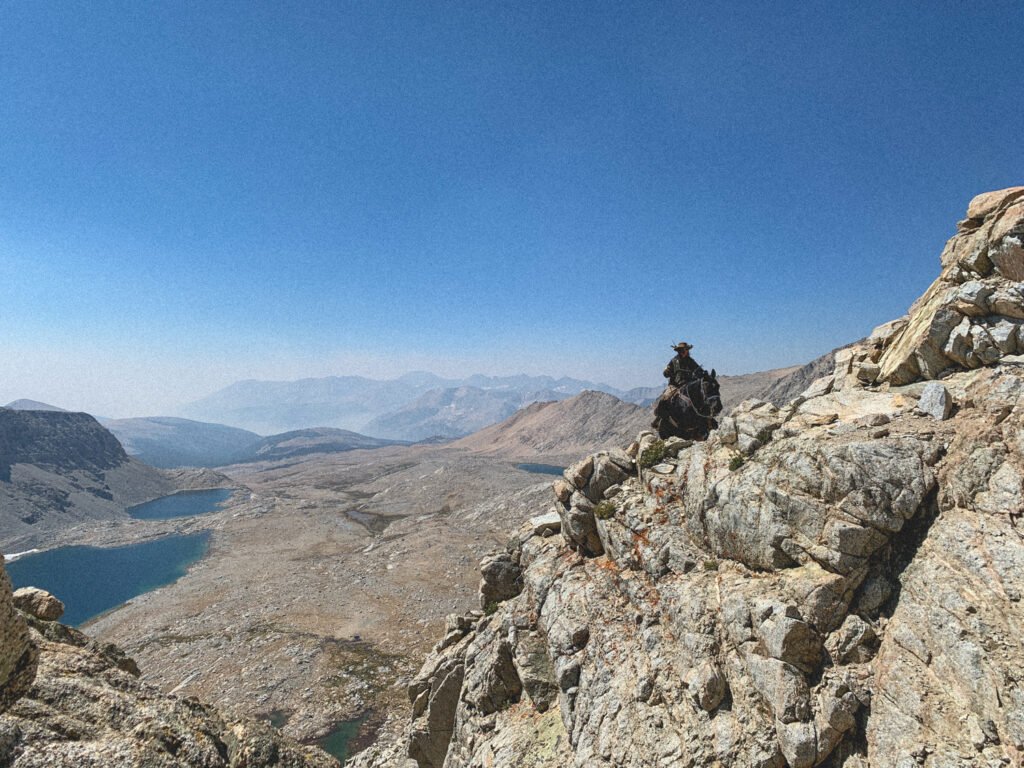
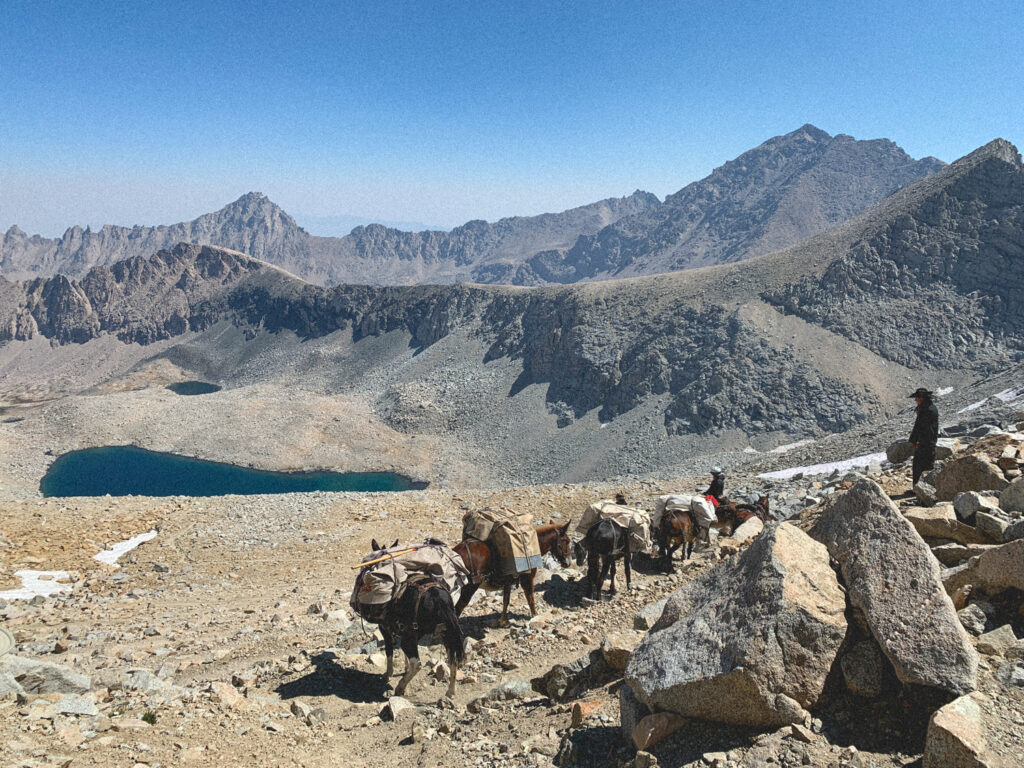
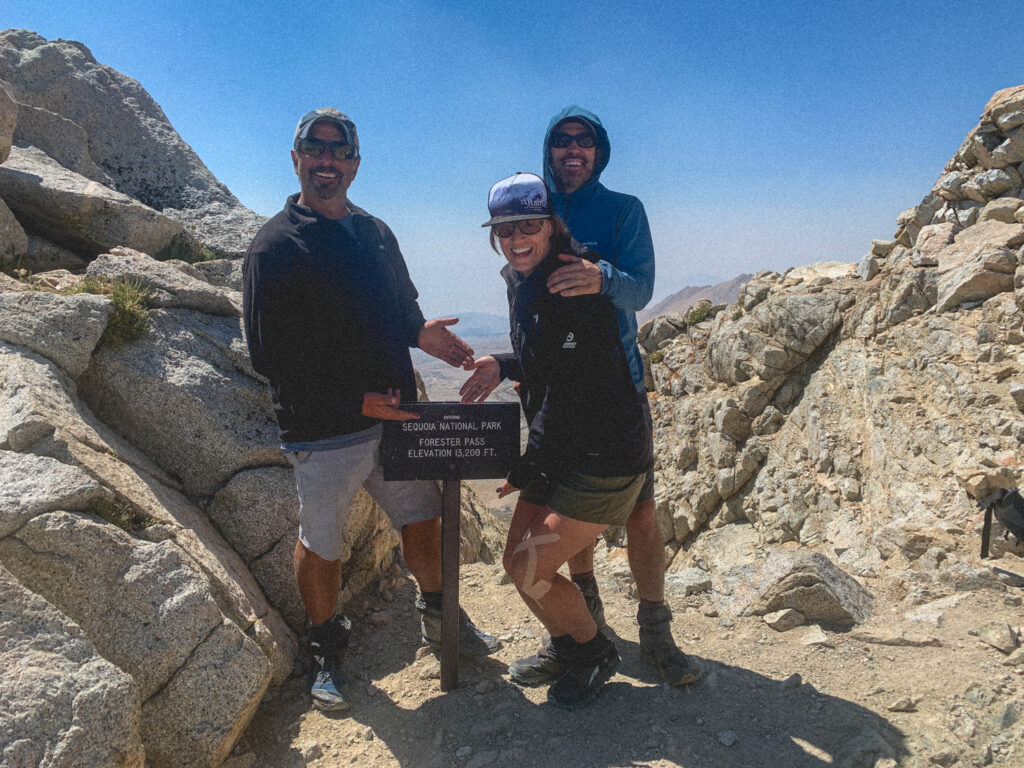
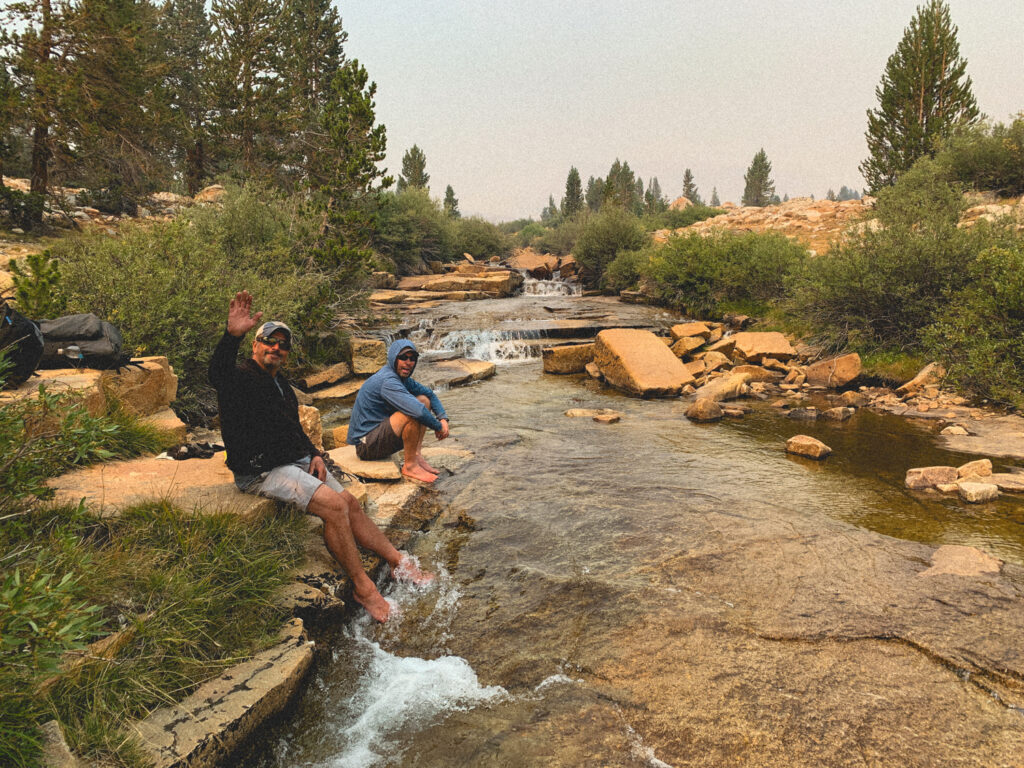
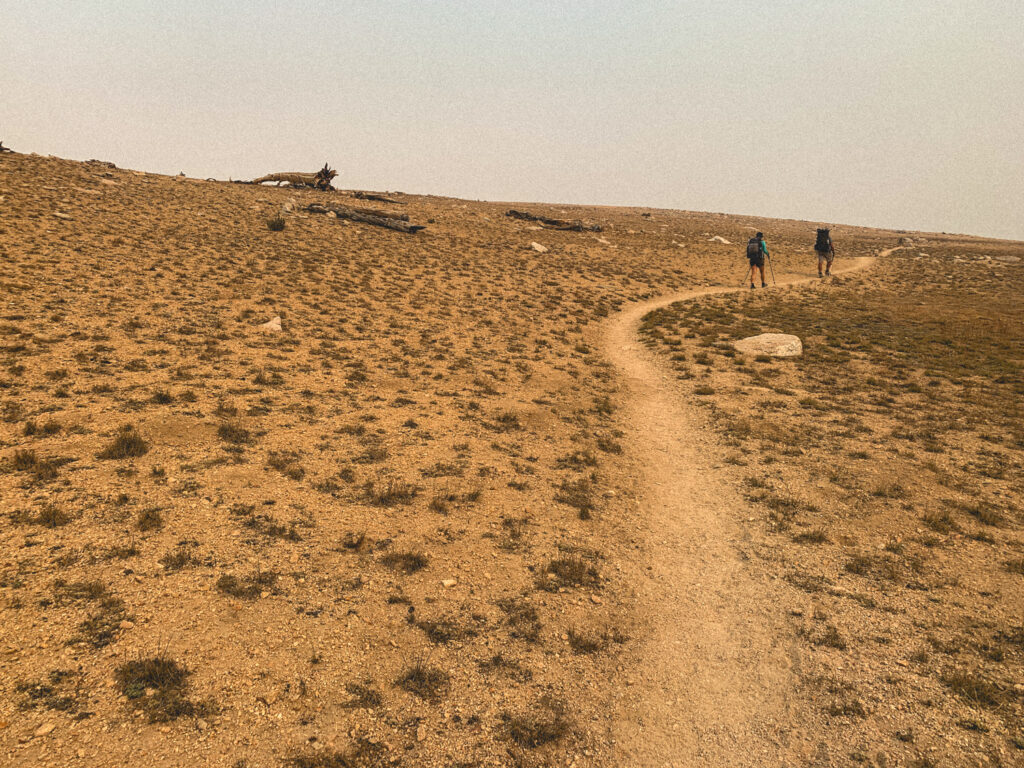
Day 6: Up to Guitar Lake (11.5 miles, 2,500’ gain)
We followed Tyndall Creek upward toward Guitar Lake, inching closer to the finish line. The smoke thickened as we climbed. By the time we reached camp, the sun and haze cast everything in apocalyptic, red light. It felt like we were inside a smoky snow globe—cut off from the world.
We ate dinner and went to bed early, ready for our 3:00 am start.
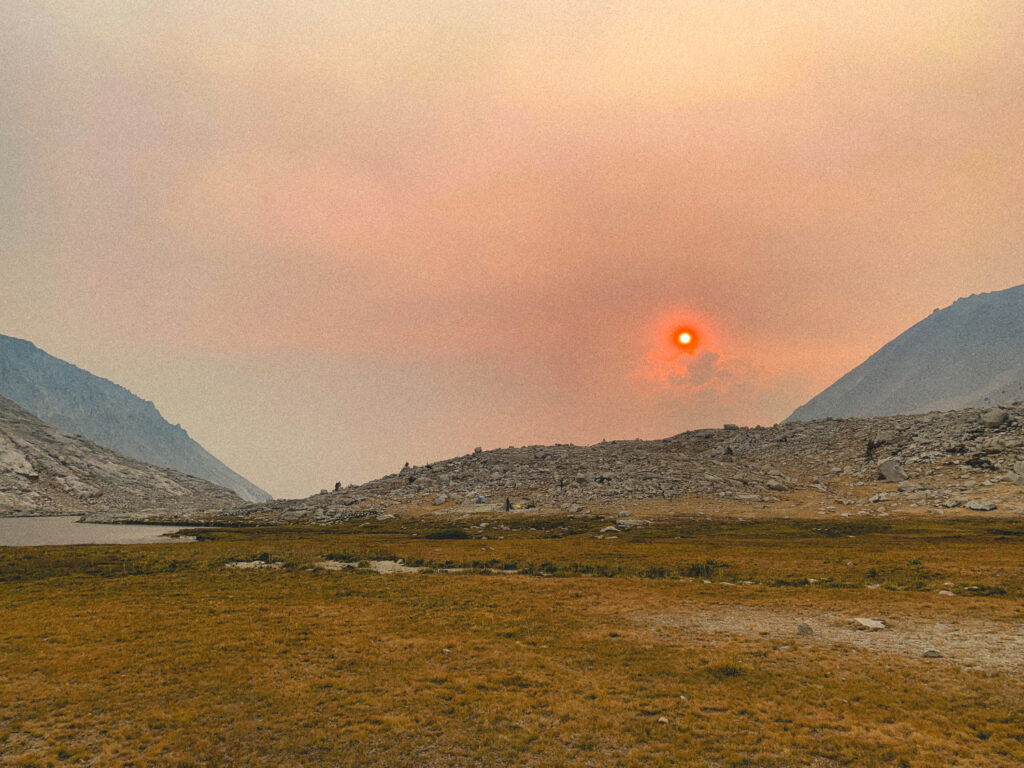
Day 7: Whitney Summit to Whitney Portal (14.5 miles, 3,451’ gain)
I barely slept that night, my mind filled with anxiety. At 3:26 am, we left Guitar Lake by headlamp, moving silently through the darkness along the west side of Mount Whitney. It was eerily peaceful—my headlamp casting a narrow beam ahead, the rest of the world swallowed by blackness.
We had hoped to catch sunrise from the summit, but our timing was off. Instead, we watched it from between Crooks Peak and Keeler Needle, where smoke-filtered light painted the sky in burnt orange and ash-gray.
We reached the summit of Whitney around 8:14 am. It was exhilarating. Exhausting. Beautiful. And more than anything—empowering. I hadn’t been sure I could make it. But with Mike’s encouragement and some grit I didn’t know I had, I stood on the highest peak in the Lower 48.
From there, we descended over 10 miles to Whitney Portal and celebrated with delicious, greasy burgers, officially ending our 67-mile, 7-day trek on the John Muir Trail.
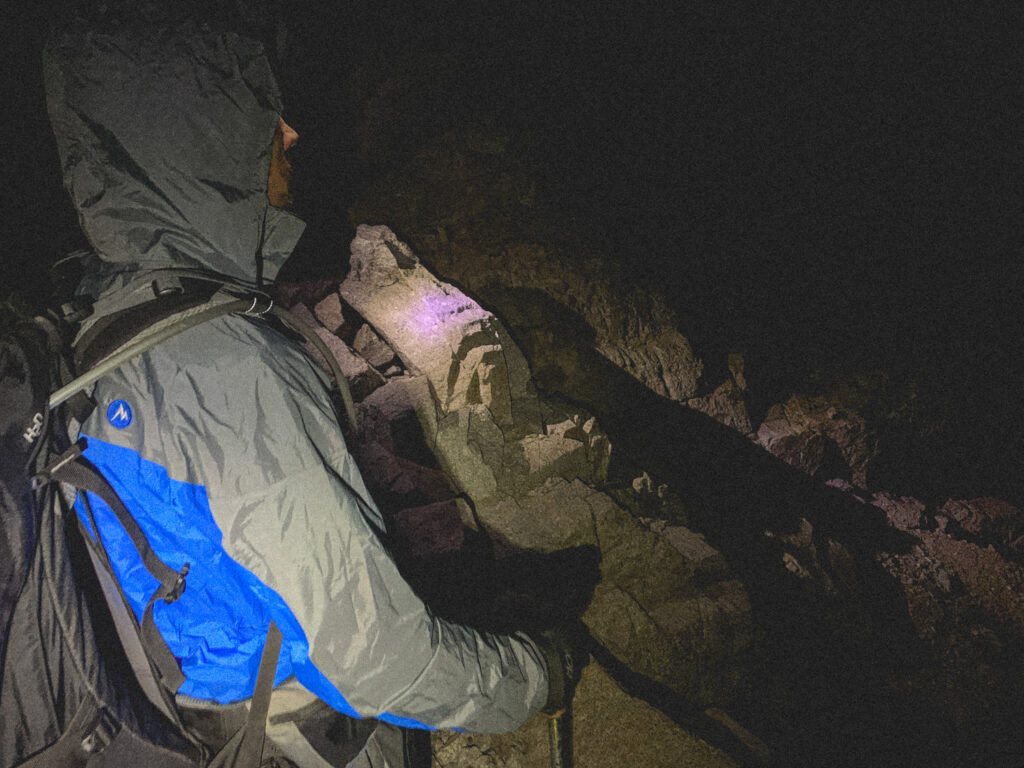

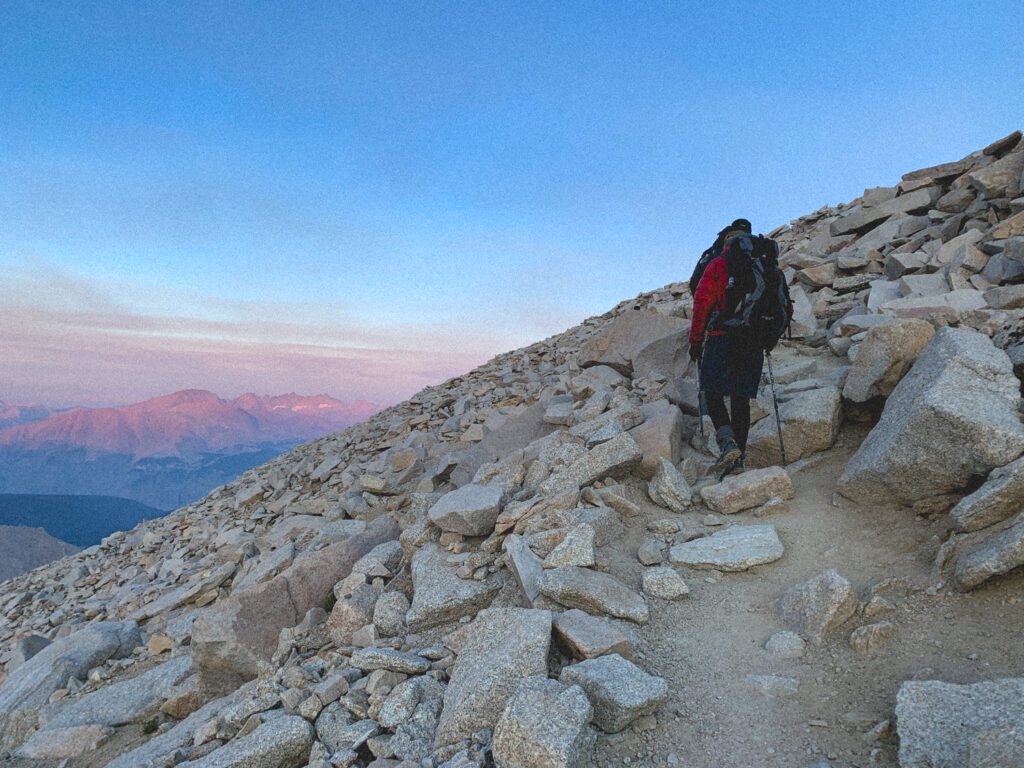

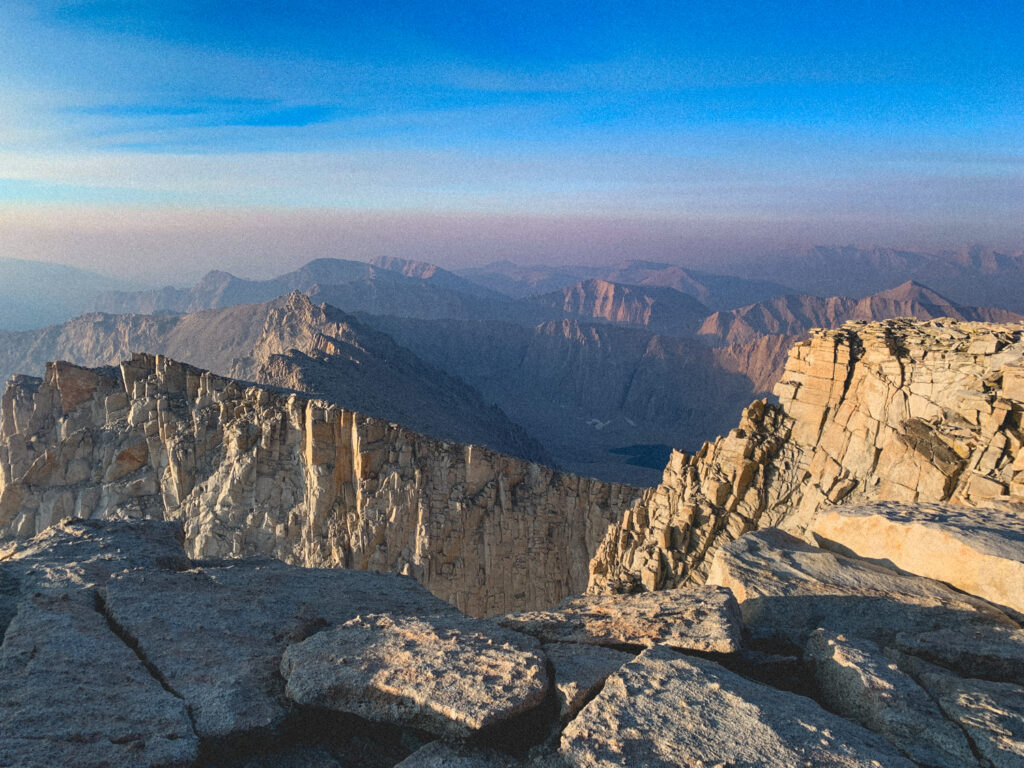
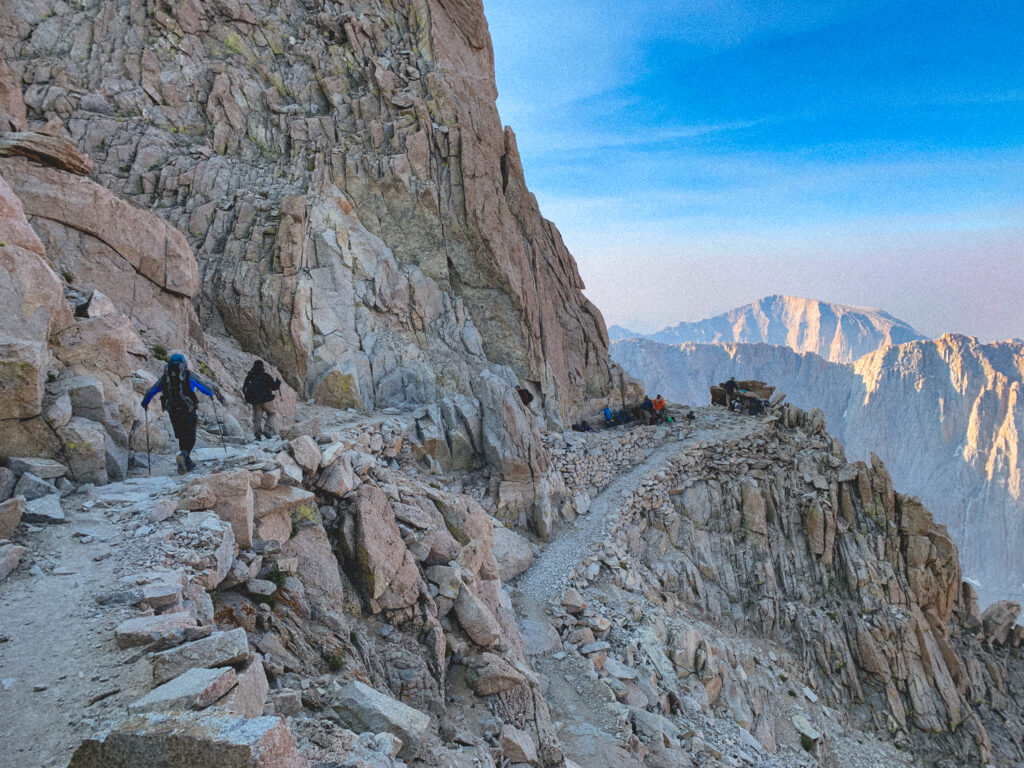
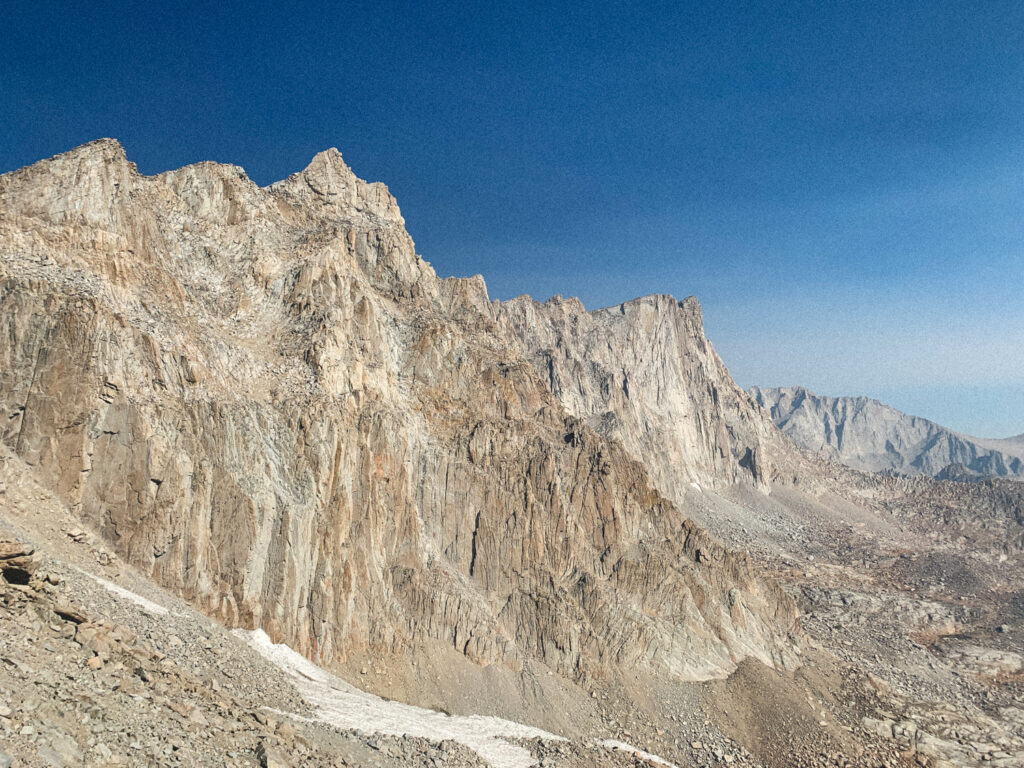
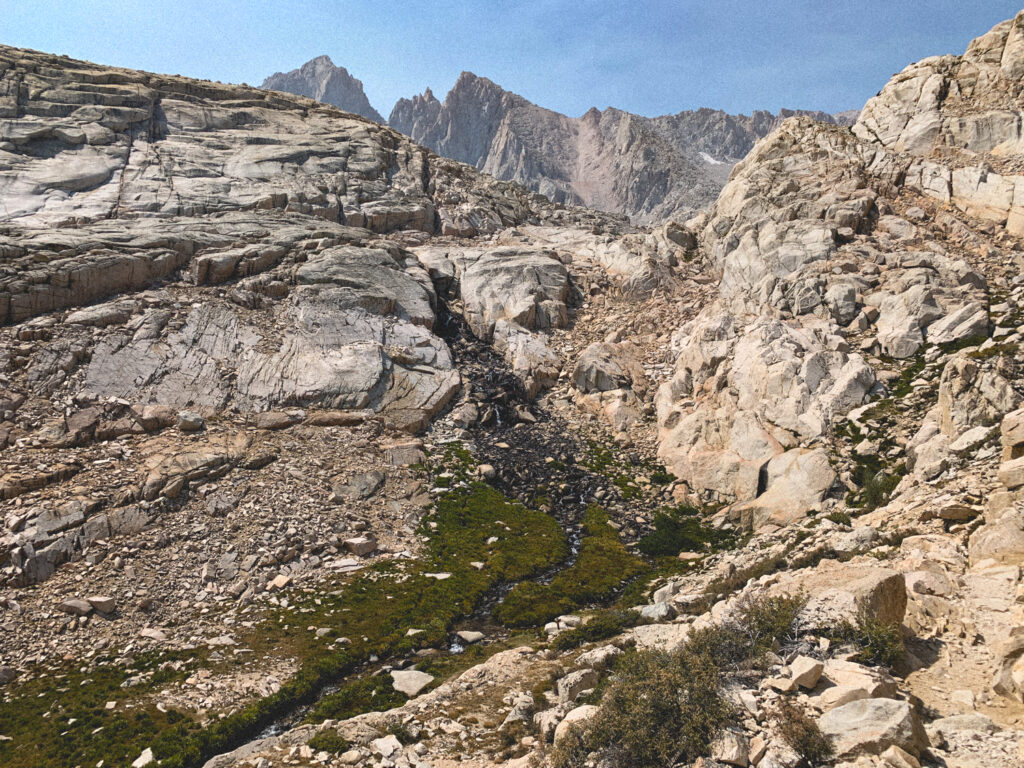
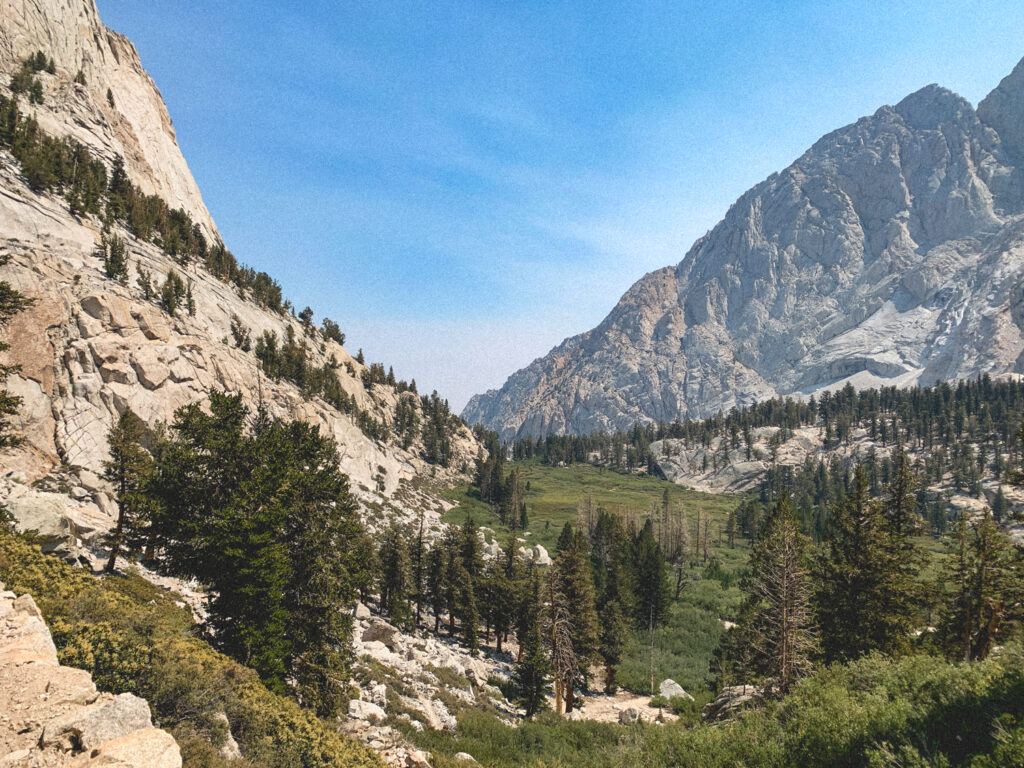
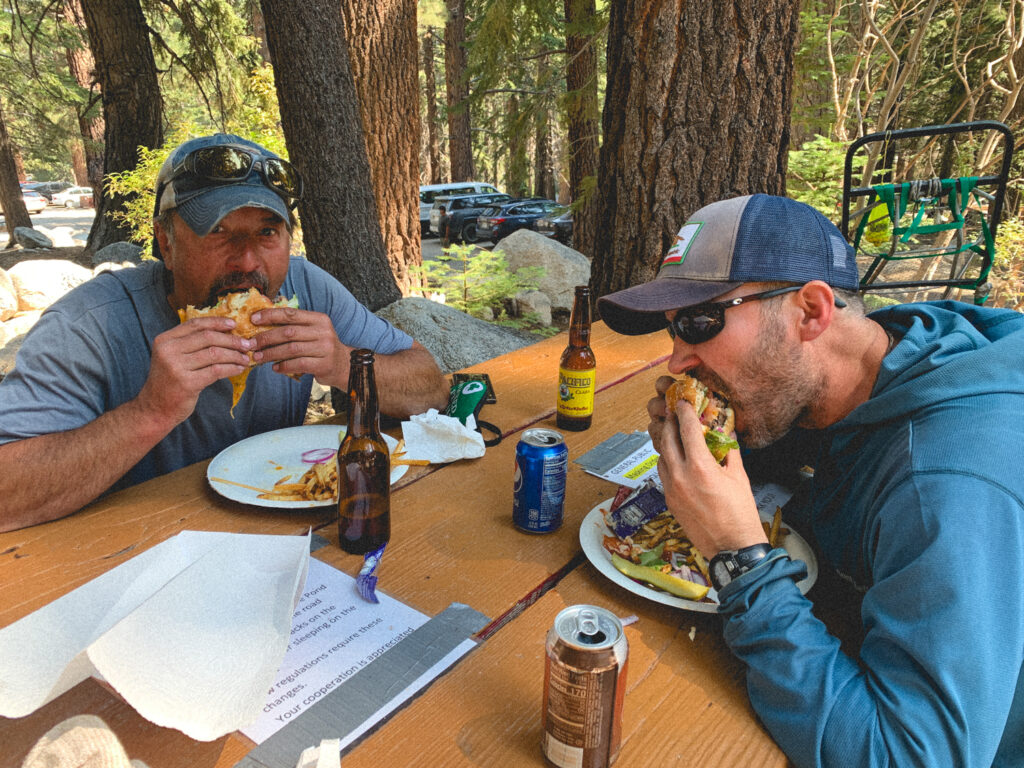
Final Reflections on Hiking the JMT in 2020
This was more than just a backpacking trip through the Sierras. It was smoke-filled skies and the unexpected kindness of strangers. It was aching knees, relentless climbs, and moments of doubt. But it was also still mornings, crystal-clear lakes, towering granite cathedrals, and the quiet joy of putting one foot in front of the other—disappearing, for a little while, from an uncertain world.
Backpacking the John Muir Trail—even a portion of it—pushed my limits and changed how I see myself. I’m forever grateful for the experience.
Want to Hike the John Muir Trail? Here’s What I’d Share:
- Start north to south if possible. The gradual elevation gain helps with acclimation.
- Hiking out of the high desert in summer can be brutally hot. Start early and carry extra water—you’ll need it.
- Wildfires are real. Stay informed on current conditions and have backup plans.
- Train for elevation and pack light. Your legs (and lungs) will thank you.
- Be open to trail magic. You never know when two strangers might save your hike.
